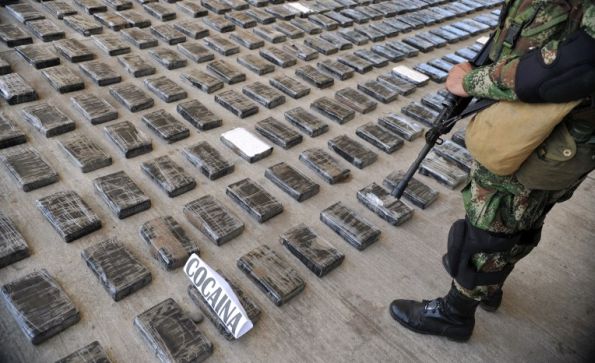
The Economist explains
Why is less cocaine coming from Colombia?April 2, 2013 - Economist
 Why is less cocaine coming from Colombia?
Why is less cocaine coming from Colombia?
COLOMBIAN police poking around a shipment of bricks bound for Honduras last month discovered half a tonne of cocaine hidden within the cargo. Such discoveries were once commonplace: in 2000 Colombia grew 74% of the world's coca leaves, the raw ingredient for cocaine. But these days it has fallen behind. The UN believes that in 2011 Colombia produced about 42% of the world's coca, only slightly more than Peru. And last year a White House report concluded that when it comes to the production of cocaine itself, Colombia has now fallen behind both Peru and Bolivia. How were Colombia's coke kings dethroned?
Virtually all coca comes from three countries: Bolivia, Colombia and Peru. The slopes of the Andes provide perfect conditions for the coca bush, whose leaves Andean people were chewing long before the arrival of European explorers. Chomped or boiled up as tea, the leaves provide a mild, caffeine-like buzz which dulls hunger and cold. Combined with a few everyday chemicals it makes the much stronger cocaine. Colombia was not always the biggest producer: in 1990 it was responsible for only 19% of the coca market, behind both Bolivia and Peru. But government crackdowns in Peru, and then Bolivia, drove the trade over the border into Colombia. In 1995 it overhauled Bolivia, and then overtook Peru in 1997 to become the world's main supplier of coca leaves.
The recent fall in coca cultivation in Colombia is partly down to a ramping up of enforcement by the Colombian government. With the help of funds from the United States under Plan Colombia, the government stepped up eradication efforts, spraying weed-killer from planes (Bolivia and Peru prefer manual eradication). At the same time demand fell in United States, Colombia's main market: in 2010 2.2% of adults took the drug, down from 3% in 2006. Europeans, meanwhile, who get most of their cocaine from Bolivia and Peru, have become far more interested in cocaine: consumption in Britain, for instance, almost doubled between 2000 and 2010 (though it has since tailed off a bit). Bolivian and Peruvian growers therefore stepped up production. They have also had to meet greater local demand: Brazil has become the world's biggest market for crack and the second-biggest for powder cocaine.
Colombia's fall from the number one cocaine-producing spot was described last year by Gil Kerlikowske, America's drug tsar, as "historic". The word is apt, though perhaps not in the way intended. History suggests that Peru's dramatic reining in of coca production in the 1990s helped push the business into Colombia. Now that Colombia is cutting down, the industry seems to be moving back into Peru, where production of coca has increased by some 40% since 2000. The trafficking business, meanwhile, has been taken on by Mexican "cartels", with appalling results in Mexico. Drug-policy geeks call this the "balloon effect": pushing down on drug production in one region causes it to bulge somewhere else. Latin Americans have a better phrase: the efecto cucaracha, or cockroach effect. You can chase the pests out of one corner of your house, but they have an irritating habit of popping up somewhere else.